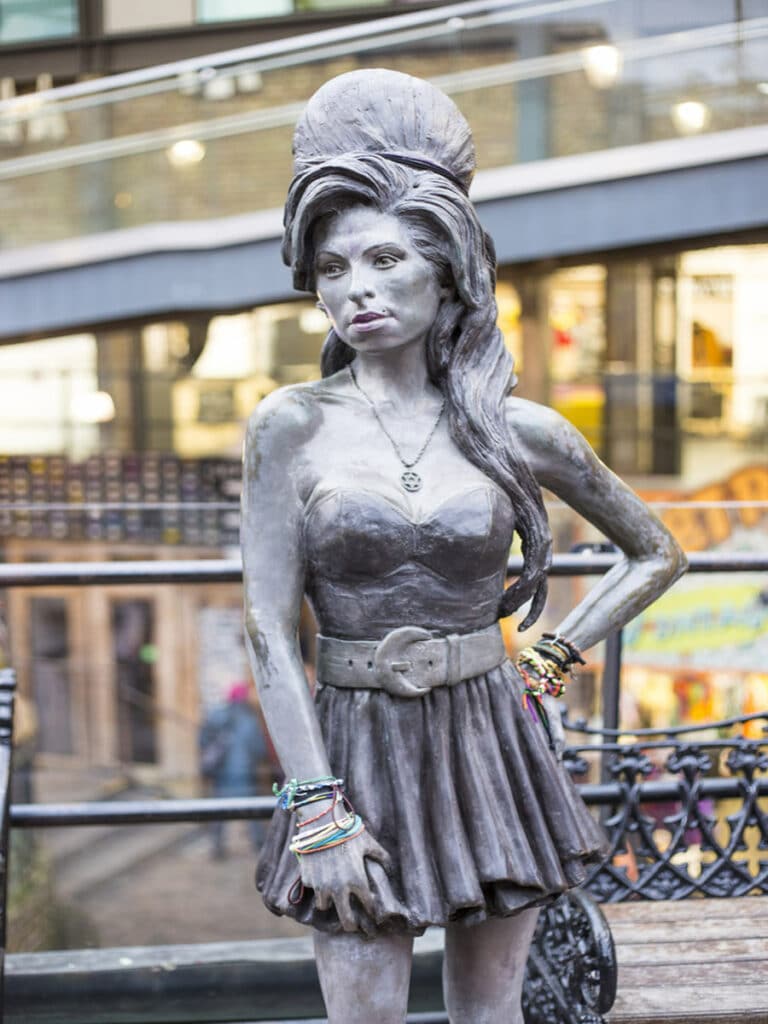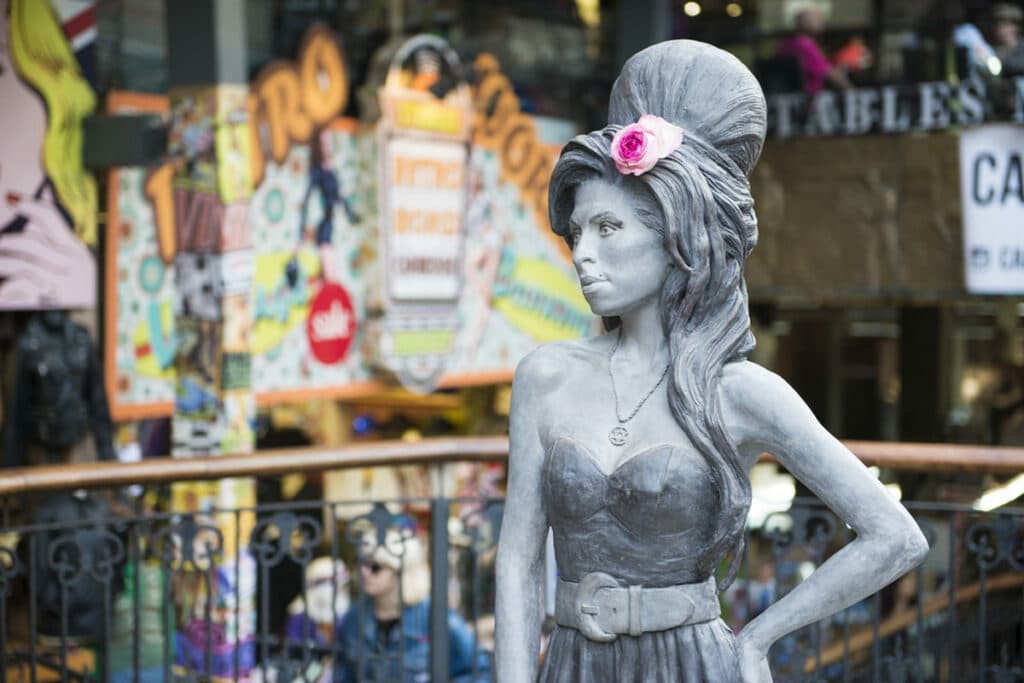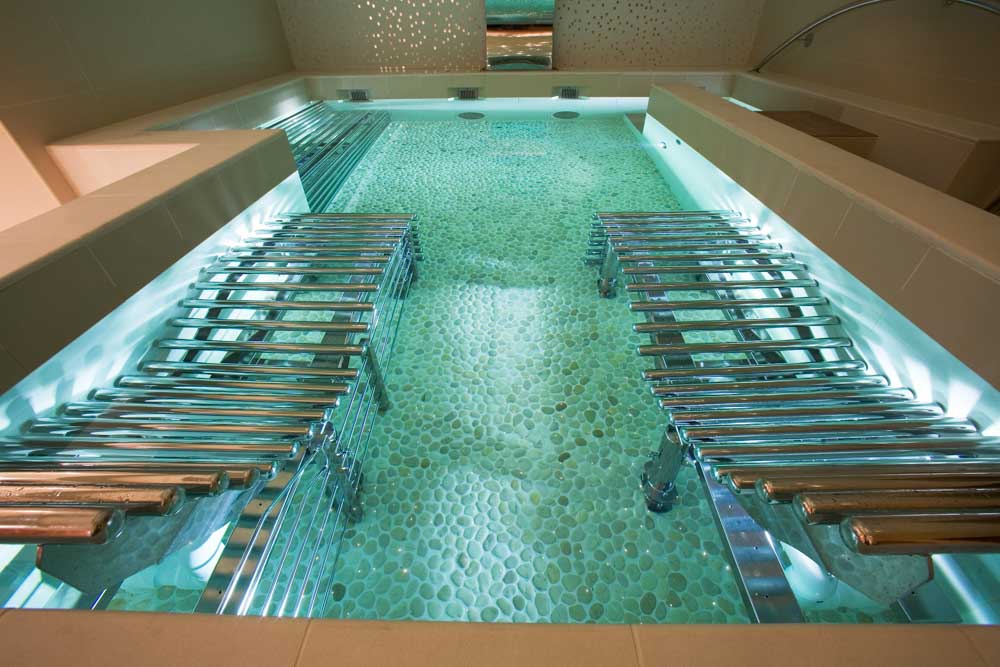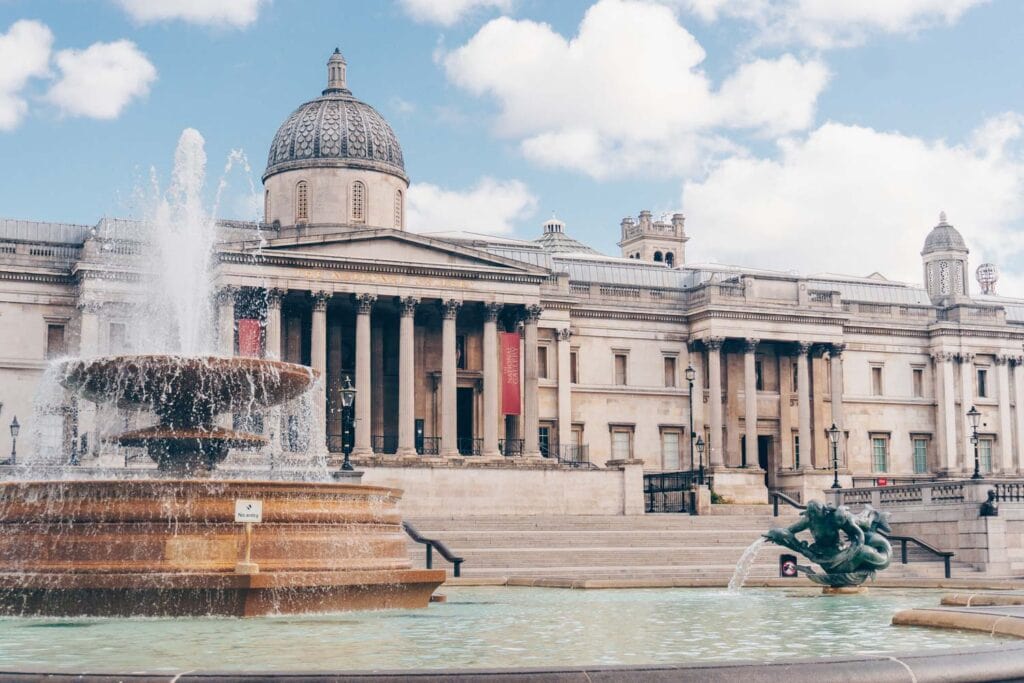Spotted Camden’s Amy Winehouse statue? Here’s where you can find it and the exceptional circumstances behind its commision.
From the ages of rock and roll and punk to Britpop, it’s impossible to overlook London’s contributions to the UK’s music scene. One of the most singular voices to come out of the city was Amy Winehouse’s.
When alive, she seemed to be a walking embodiment of some side of London, as much a product of the late-90’s/early 2000’s London music scene as she was a crooner in the old-school model.
There’s no way to remember a legendary figure like sculpting a lifesize replica of them in a material that will last longer than a regular human lifetime. In Camden they’ve done just that to commemorate Amy Winehouse.
Read on for everything you need to know about her statue.
The History of The Amy Winehouse Statue
Exceptional Circumstances
The sculpture was unveiled in 2014, three years after Winehouse’s death, in a set of circumstances that broke from usual tradition. According to some unwritten rule somewhere, statues of people are usually only commissioned 20 years after their death.
Apparently Camden Council recognized Amy Winehouse’s impact on the area (she was big in Camden, like BIG) and agreed to have the statue built. Easton was awarded the commission only after it had been approved by the singer’s family, which it was.
It was originally intended that the statue would go up at the Roundhouse (classic North-London music venue), but because it would have been hard for Joe Public to go and visit, the powers that be decided they’d put the statue in Stable’s Market instead.
Now it stands a few minutes walk from some Camden spots that Amy made her home. The Lock Tavern down the road is where she performed some of her earliest gigs, and the Hawley arms, also just a stone’s throw away, was her favourite boozer.
It’s also the hangout of many other celebs of the era, including Kate Moss, Noel Fielding, and Razorlight. Amy Winehouse was known to jump behind the bar and pull her own pints when she wasn’t drinking her fav drink, the Rickstasy, that might just get made for you if you ask the bar staff nicely enough.
A Birthday Unveiling
After approval from the Winehouse estate, work was begun and the Amy Winehouse London statue was finally unveiled on the 14th of September 2014 – the day that Amy Winehouse would’ve turned 31.
At the unveiling, the statue revealed a red rose in Winehouse’s signature bee-hive hairdo. The rose was a nod to the fact, on occasion, she used to wear one in her hair when performing.
You’ll notice that the statue’s arms have also been covered with wristbands and bracelets. These are mementos from fans, some of which have notes and condolences written into them.
The Statue

Forged in brass, the figure shows Winehouse posing with one hand on her hip and full bee-hive hairdo on lock, her characteristic attitude not missing either. It was made by American artist Scott Eaton who often explores figures in his work.
He’s quoted to have said about the Winehouse statue that it was made to capture her “attitude and strength, but also give subtle hints of insecurity.”
The statue can be found in Camden Stables Market. If you take the big gate on Chalk Farm Road, the one opposite Hartland Road, and turn right you’ll find the statue pretty easily.
Another way to put it would be that it’s right opposite The Cheese Bar.
It is, of course, the 21st century. And we do, for better or for worse, live in the age of Instagram, so it’s also possible to find Amy by the crowds of people lining up to take a picture with her.
The Amy Winehouse Statue: Practical Information
Address: Camden Stables Market Chalk Farm, London NW1 8AH
You can see the Amy Winehouse statue for free any time of the day in Camden Stables Market.



